Measuring the success of your branding efforts is crucial to understanding how well your brand is performing and achieving its goals. In this blog post on, How to Measure the Success of Your Branding Efforts, we will explore the key metrics and methods that can help you assess the effectiveness of your branding strategies.
By tracking and analyzing these metrics, you can gain valuable insights into your brand’s awareness, perception, loyalty, and overall impact. Let’s dive in and discover the essential tools and techniques to evaluate the success of your branding initiatives.
Overview
Overview of the key metrics and methods covered in the blog post.
| Metric | Description | Recommended Tools |
|---|---|---|
| Reach and Impressions | Number of people exposed to brand messages | Social media analytics, web analytics |
| Social Media Engagement | Interactions (likes, shares, comments) on social media posts | Facebook Insights, Twitter Analytics |
| Surveys and Interviews | Gathering customer feedback | Online survey tools, focus groups |
| Online Reviews and Sentiment | Analysis of customer reviews and sentiment | ReviewTrackers, Brandwatch |
| Customer Retention Rates | Measure of customer loyalty and repeat purchases | CRM systems, customer databases |
| Net Promoter Score (NPS) | Indicator of customer advocacy and loyalty | NPS survey tools, NPS calculators |
| Market Share and Share of Voice | Assessing brand visibility and market competitiveness | SEMrush, SimilarWeb |
| Website Traffic and Referral Sources | Tracking website visitors and traffic sources | Google Analytics, web analytics tools |
| Conversion Rates | Percentage of website visitors who take desired actions | Google Analytics, conversion tracking tools |
| Brand Value and Financial Performance | Estimating brand equity and financial impact | Brand valuation models, financial analysis |
| Brand Recognition and Recall | Measurement of brand recall and recognition | Brand recall surveys, customer surveys |
Understanding Branding Success
Defining branding success and its goals:
When we talk about branding success, we refer to the achievement of desired outcomes related to your brand. It involves reaching specific goals that you have set for your brand.
These goals can vary from increasing brand awareness and recognition to building a positive perception among your target audience. Branding success is about creating a strong and memorable image of your brand in the minds of customers and achieving the desired impact.
Explaining the connection between branding and business objectives:

Branding is closely linked to your overall business objectives. It serves as a strategic tool that helps you accomplish those objectives. Your brand represents your company’s values, mission, and unique qualities.
By effectively building and managing your brand, you can enhance customer trust, loyalty, and preference, which ultimately contributes to the achievement of your business goals. A strong brand can differentiate you from competitors, attract new customers, and drive growth and profitability.
Key Metrics for Measuring Branding Success
1. Brand Awareness:
Brand awareness is a crucial metric for measuring the success of your branding efforts. It refers to how familiar your target audience is with your brand. To measure brand awareness, you can track two essential factors: reach and impressions.

Reach represents the number of people exposed to your brand messages, while impressions indicate the total number of times your brand content has been displayed. By analyzing reach and impressions through tools like social media analytics and web analytics, you can assess the effectiveness of your branding activities and determine the level of awareness your brand has achieved.
Tracking Reach and Impressions
To effectively measure the success of your branding efforts, it’s crucial to understand the concepts of reach and impressions. Reach refers to the total number of people who have been exposed to your brand messages. It indicates the size of your potential audience.
Impressions, on the other hand, represent the total number of times your brand messages have been viewed, regardless of whether it’s by the same person or not. Impressions can help you gauge the overall visibility and impact of your branding activities.

To measure reach and impressions, you can utilize various techniques such as social media analytics and web analytics. Social media analytics tools provide valuable insights into how many people have seen your posts or updates across different social media platforms. These tools can help you track the number of likes, shares, and comments on your content, giving you an idea of the engagement it has generated.
Web analytics tools, on the other hand, can provide data on the number of visitors to your website, the pages they have viewed, and the duration of their visits. These tools offer valuable metrics to assess the reach and impressions generated through your website.
By tracking reach and impressions, you can gain valuable insights into the exposure and visibility of your brand. This information allows you to understand the effectiveness of your branding efforts and make data-driven decisions to optimize your strategies for better results.
Monitoring Social Media Engagement

Social media engagement is a crucial aspect when measuring the success of your branding efforts. It helps you understand how people are interacting with your brand on platforms like Facebook and Twitter.
Engagement metrics such as likes, shares, and comments provide valuable insights into the level of interest and interaction generated by your content. Likes indicate that people appreciate your posts, while shares show that they find your content valuable enough to share with others. Comments allow for direct communication and feedback from your audience.
To effectively track social media engagement, you can utilize tools like Facebook Insights and Twitter Analytics. These tools provide in-depth data and analytics, allowing you to measure the performance of your social media campaigns, identify trends, and make informed decisions to enhance your branding strategies.
2. Brand Perception
Conducting Surveys and Interviews to Measure Brand Perception

Brand perception plays a crucial role in assessing the success of your branding efforts. Understanding how your customers perceive your brand can provide valuable insights for improvement. Gathering customer feedback is essential for this purpose.
- Importance of gathering customer feedback: To measure brand perception, it’s vital to listen to your customers. Gathering their feedback allows you to understand their opinions, preferences, and experiences with your brand. This information helps you identify strengths to leverage and areas for improvement.
- Methods for conducting surveys and interviews: There are effective ways to collect customer feedback, such as online surveys and focus groups. Online surveys provide a convenient method to reach a large audience and gather feedback on a broader scale. Platforms like Google Forms or SurveyMonkey offer user-friendly interfaces to create and distribute surveys. On the other hand, focus groups involve bringing together a small group of individuals to have in-depth discussions and obtain qualitative insights. These discussions can be conducted in person or virtually, using video conferencing tools.
Using surveys and interviews as part of your brand perception measurement strategy enables you to gain direct insights from your target audience, helping you make informed decisions and improve your brand’s overall perception and success.
Analyzing Online Reviews and Sentiment
Online reviews play a significant role in shaping how people perceive your brand. These reviews, shared by customers on various platforms, can greatly influence the reputation and image of your business.
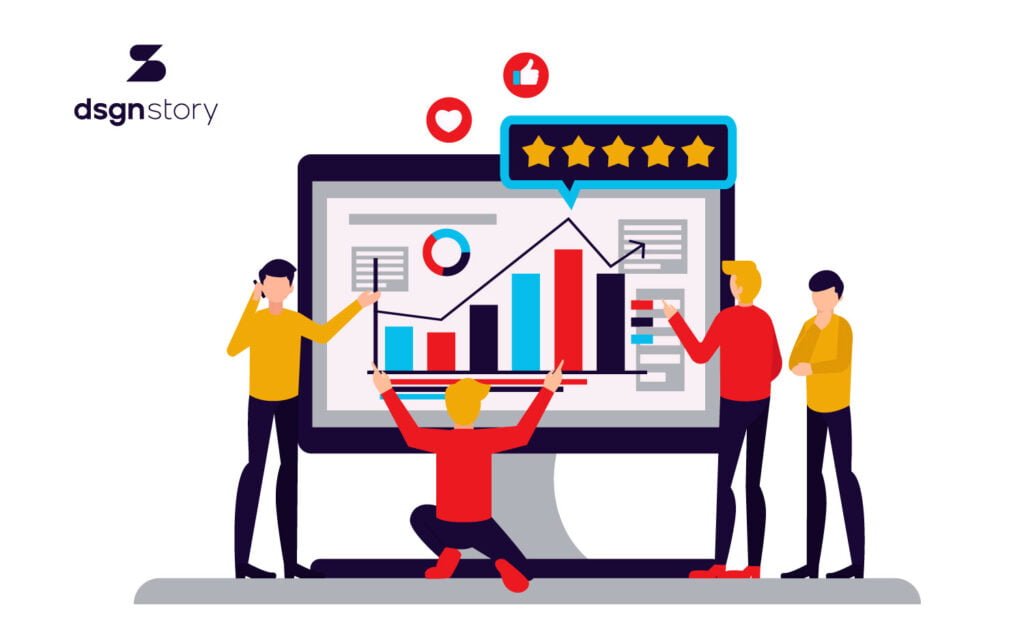
They provide valuable insights into customer experiences and opinions. To make sense of the vast amount of online feedback, sentiment analysis tools like ReviewTrackers and Brandwatch can be incredibly helpful. These tools analyze the sentiment expressed in reviews, helping you understand whether the sentiment is positive, negative, or neutral.
By monitoring online reviews and sentiment, you can gain a better understanding of how your branding efforts are resonating with your target audience. This knowledge allows you to make informed decisions and refine your branding strategies accordingly.
3. Brand Loyalty and Advocacy
Tracking Customer Retention Rates

Customer retention rates are essential for measuring brand loyalty and the effectiveness of your branding efforts. They help you understand how many customers continue to make repeat purchases and stay loyal to your brand over time (A).
Repeat purchases indicate that customers are satisfied with your products or services and are willing to come back for more. On the other hand, churn rate refers to the percentage of customers who stop engaging with your brand or switch to a competitor (A).
By calculating customer retention rates, you can assess the success of your strategies in keeping customers engaged and loyal (A).
Measuring Net Promoter Score (NPS)

Net Promoter Score (NPS) is a widely used metric for measuring customer advocacy and brand loyalty (A). It provides valuable insights into how likely your customers are to recommend your brand to others (A).
NPS is determined through a simple survey where customers are asked to rate, on a scale of 0 to 10, how likely they are to recommend your brand to a friend or colleague (B).
Customers are then categorized into three groups: Promoters (9-10 ratings), Passives (7-8 ratings), and Detractors (0-6 ratings) (B). By subtracting the percentage of Detractors from the percentage of Promoters, you can calculate your NPS (B). A higher NPS indicates stronger brand advocacy and loyalty among your customers (B).
Methods for Assessing Branding Efforts
1. Market Research and Competitive Analysis
Market research and competitive analysis are crucial for evaluating the success of your branding efforts. One effective method is by examining market share and share of voice.
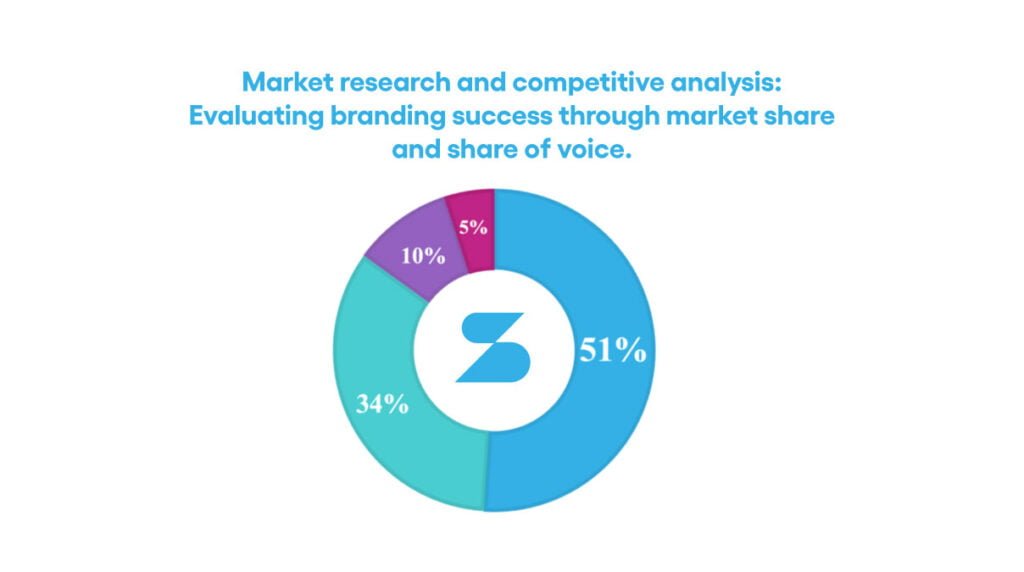
Definition and Importance of Market Share and Share of Voice
Market share refers to the percentage of total sales within a specific industry or market that your brand captures. It helps you understand your brand’s position in the market and how well you’re competing against other players.
Share of voice, on the other hand, measures the visibility and exposure of your brand’s marketing efforts compared to your competitors. It considers factors like advertising spend, social media presence, and overall brand mentions. A higher share of voice indicates that your brand is capturing a larger portion of consumer attention and engagement.
Tools for Competitive Analysis
To conduct a comprehensive competitive analysis, you can rely on tools like SEMrush and SimilarWeb. These tools provide valuable insights into your competitors’ online presence, including their website traffic, search engine rankings, advertising strategies, and social media performance.
With the data obtained from these tools, you can assess how well your brand is performing in comparison and identify areas for improvement in your branding efforts.
By analyzing market share and share of voice using these tools, you can gain a better understanding of your brand’s position in the market, identify opportunities for growth, and make informed decisions to strengthen your branding strategy.
2. Tracking Website Metrics
Analyzing Website Traffic and Referral Sources
When it comes to tracking the performance of your website, examining website traffic data and referral sources is crucial. Website traffic data includes the number of sessions and unique visitors your website receives.
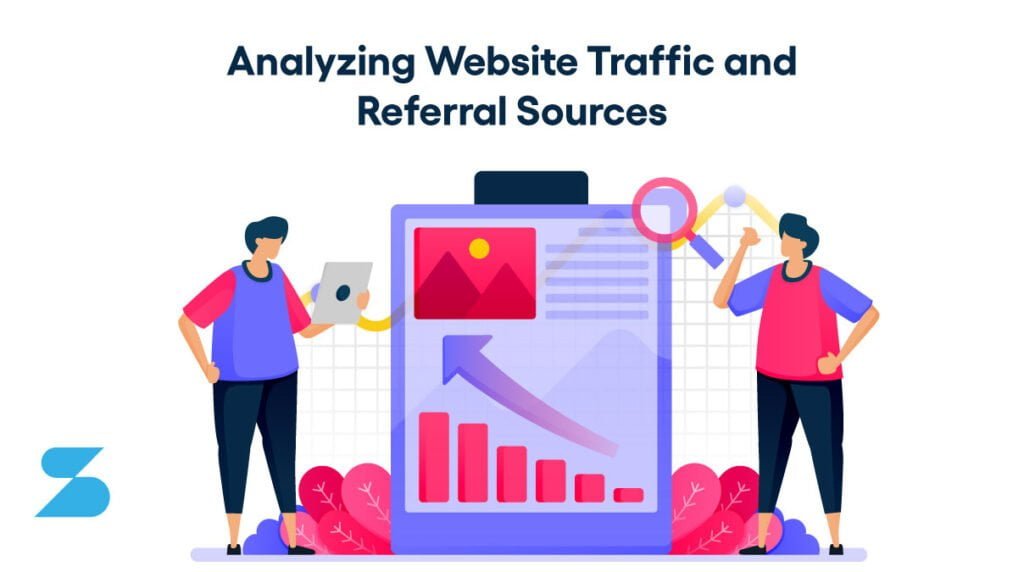
Sessions refer to the total number of visits to your website, while unique visitors represent the number of distinct individuals who visit your site. By analyzing this data, you can understand the overall popularity and reach of your website.
Determining referral sources is equally important. Referral sources indicate where your website visitors are coming from. There are various referral sources, including organic search, social media, and direct traffic.
Organic search refers to visitors who found your website through search engines like Google. Social media encompasses visitors who arrived through platforms like Facebook, Twitter, or Instagram.
Direct traffic consists of visitors who directly entered your website URL into their browsers. By identifying these referral sources, you can gain insights into which channels are driving the most traffic to your site.
Assessing Conversion Rates
Conversion rates play a significant role in evaluating the effectiveness of your website. Conversion rates refer to the percentage of website visitors who take desired actions, such as making a purchase, subscribing to a newsletter, or filling out a contact form.

Understanding conversion rates is essential because they indicate how well your website is converting visitors into customers or leads.
To assess conversion rates, you can utilize tools like Google Analytics. This powerful tool provides detailed insights into user behavior on your website, allowing you to track and monitor conversion rates over time.
By monitoring conversion rates, you can identify areas where your website might need improvement and make informed decisions to optimize its performance.
The Significance of Conversion Rates
Conversion rates are crucial because they reveal the effectiveness of your website in achieving its goals. Whether your objective is to generate sales, capture leads, or drive user engagement, conversion rates provide tangible metrics to gauge your website’s success.
By understanding conversion rates, you can identify strengths and weaknesses in your website’s user experience and conversion funnel, enabling you to make data-driven improvements that maximize your website’s impact.
3. Assessing Brand Equity
Brand Value and Financial Performance
Brand value and financial performance are closely connected when it comes to assessing brand equity. A strong brand can have a significant impact on a company’s financial success.
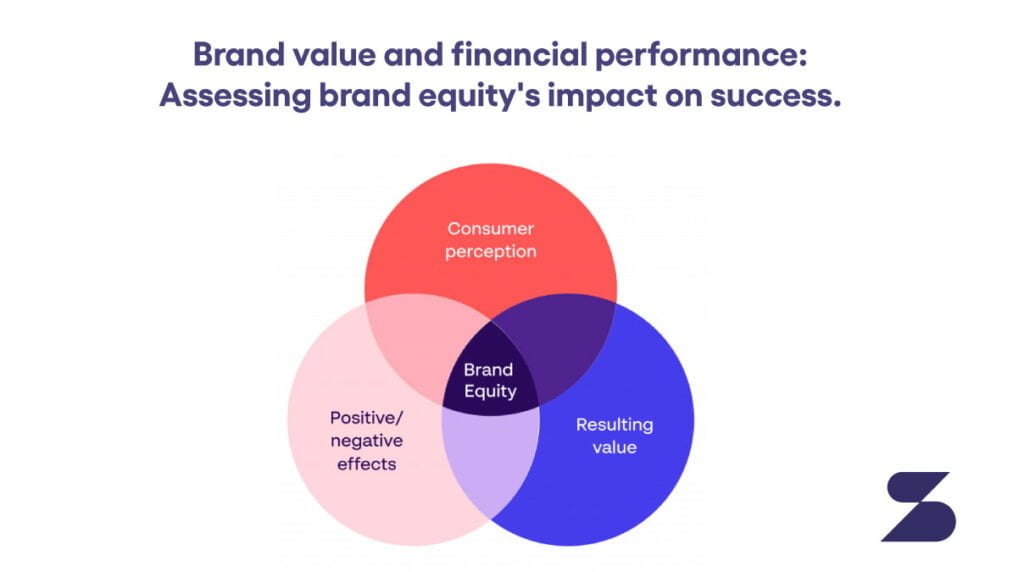
To estimate brand value, various methods such as brand valuation models can be used. These models help measure the worth of a brand based on factors like market position, customer perception, and revenue generation potential.
Brand Recognition and Recall
Brand recognition and recall play a vital role in assessing brand equity. Brand recognition refers to how easily consumers can identify and associate a brand with its products or services. It is important for a brand to be recognized to stand out among competitors.
Brand recall, on the other hand, measures how well consumers can remember and retrieve a brand from memory when prompted. Conducting brand recall surveys helps gauge the effectiveness of a brand’s marketing efforts and its ability to leave a lasting impression on consumers.
By improving both recognition and recall, a brand can strengthen its overall brand equity.
Creating a Brand Performance Dashboard
Selecting Key Performance Indicators (KPIs)
Identifying the right Key Performance Indicators (KPIs) is crucial for measuring the success of your branding efforts. KPIs are specific metrics that reflect the progress towards your business objectives and branding goals.

By choosing the most relevant KPIs, you can gain valuable insights into how well your branding strategy is performing. For example, if your objective is to increase brand awareness, you might consider tracking metrics such as reach and impressions, social media engagement, and website traffic.
These indicators can help you understand the effectiveness of your branding initiatives and make informed decisions for future improvements.
Setting Up Data Tracking and Reporting
To effectively measure the success of your branding efforts, it’s essential to set up proper data tracking and reporting mechanisms. By implementing tools for data tracking and automation, you can streamline the process of collecting and analyzing relevant data.

This could include utilizing web analytics platforms like Google Analytics or social media analytics tools. Additionally, creating a brand performance dashboard can visually present your chosen KPIs in a comprehensive and easily understandable format.
This dashboard allows you to monitor your progress over time, identify trends, and make data-driven decisions to optimize your branding strategies. With the right data tracking and reporting systems in place, you can have a clear view of your branding performance and take appropriate actions to achieve your goals.
Measuring Branding Success for Optimal Results
We’ve explored the crucial role of measuring branding success. Branding is not just about creating a visual identity; it directly impacts your business objectives. By tracking and analyzing various metrics, you can gain valuable insights into how well your branding efforts are performing and make informed decisions to drive success.
Encouragement to Implement Tracking and Measurement Strategies
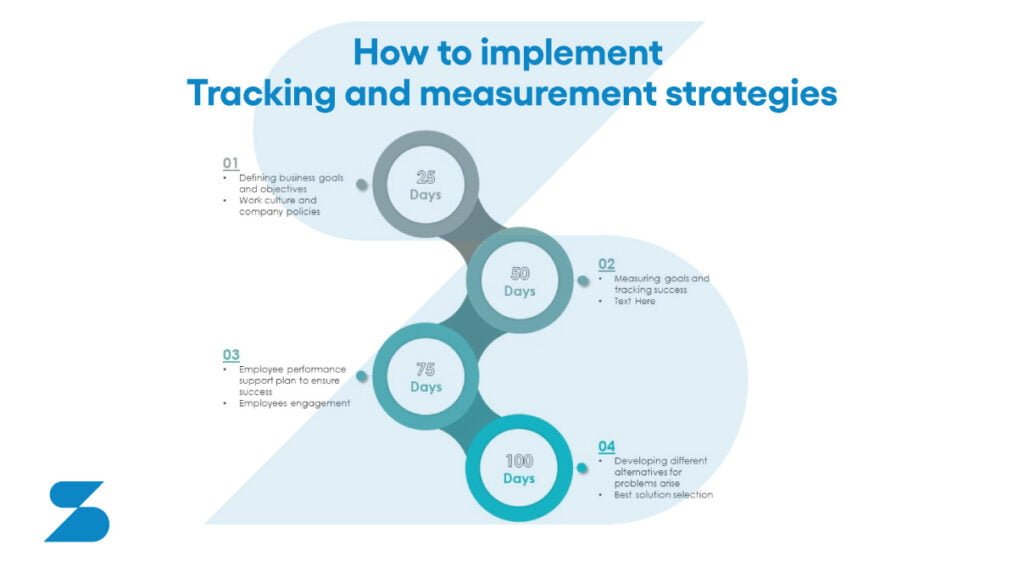
To effectively measure your branding success, it’s essential to implement tracking and measurement strategies. By monitoring key metrics such as brand awareness, perception, loyalty, and market share, you can gauge the impact of your branding initiatives.
Utilize tools like social media analytics, customer surveys, and web analytics to gather data and assess the effectiveness of your branding strategies.
Final Thoughts on Optimizing Branding Efforts
Optimizing your branding efforts requires a holistic approach. Remember to set clear goals and align your branding activities with your business objectives. Regularly review and refine your strategies based on the insights gained from tracking metrics.
Building a strong brand takes time and consistent effort, so stay committed to continuous improvement and adapt to changes in customer preferences and market trends.
By measuring the success of your branding efforts, you can identify areas for improvement, capitalize on successful strategies, and make data-driven decisions to enhance your brand’s impact and achieve long-term success.
Embrace the power of measurement and tracking to elevate your brand and drive meaningful connections with your target audience.